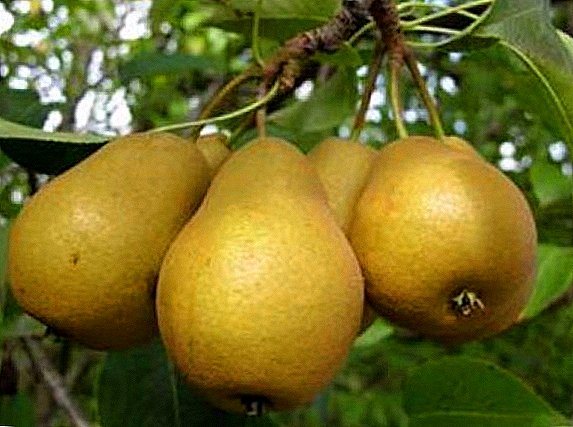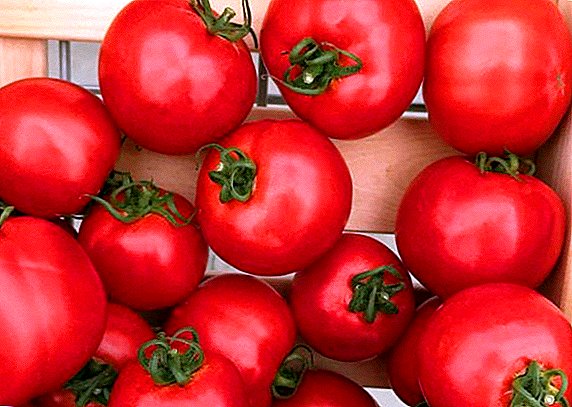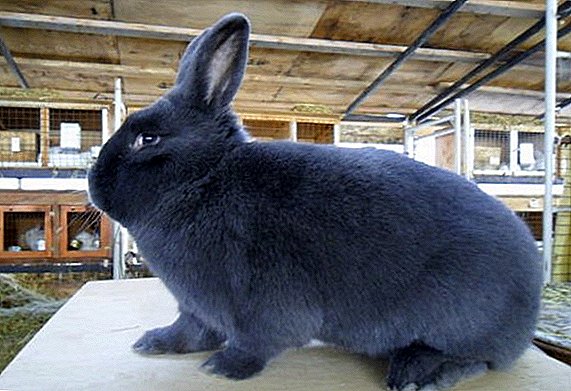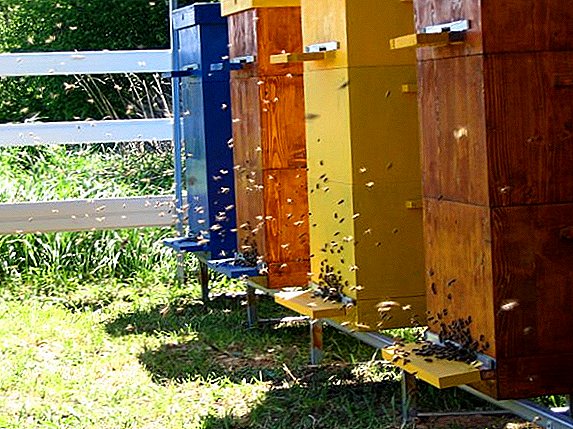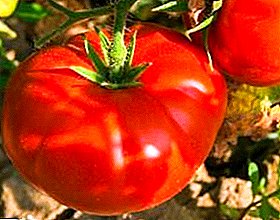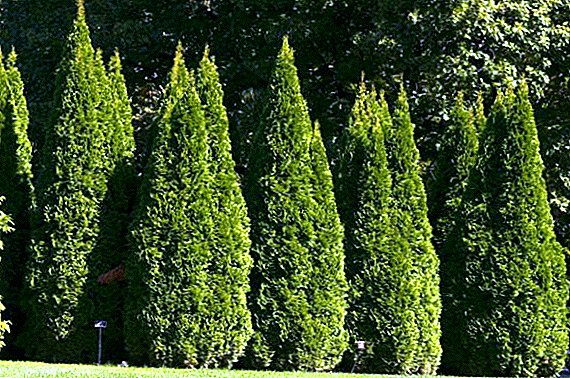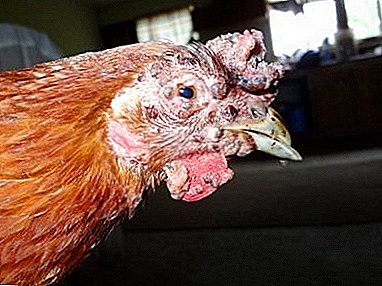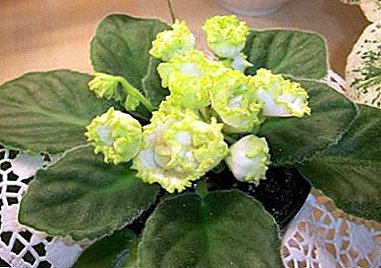
For many years, people around the world have been engaged in floriculture. Flowers on garden sites, city beds and in rooms delight with their beauty. In addition to decorative purposes, plants are used as medicines and spices. Of all the variety there are flowers that do not require special attention and meticulous care. Among them are the violets. More than five hundred of their varieties are known.
General description of the variety
"Greenhouse effect" is considered one of the most unpretentious indoor flowers. This type of flowers blooms for 2-3 months. This violet is similar to large terry lilies of the valley, so it is suitable for those who like bell-shaped flowers. On the peduncle are 2 -3 buds.
When and how did it appear?
The date of occurrence of this species is 2008. It was bred by Konstantin Morev. His goal was to create flowers in the form of "lily of the valley" with an unusual color. And already in 2008, this violet was presented at the exhibition. You can learn about other varieties bred by K. Morevim in a separate article.
Homeland of all violets is the East African province. By the name of the governor of the province is another name for violets - "Saintpaulias".
Appearance: leaves, flowers, other
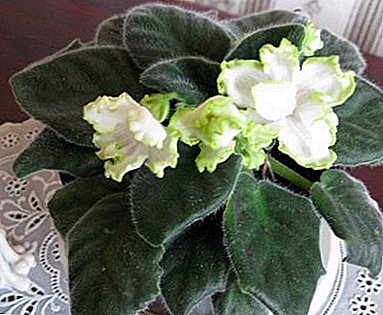 Flowers The flowers are white semi-double bells with a corrugated green-brown edging. Petals grow together. The flowers are medium in size with white-yellow anthers. Often do not retain the shape of a bell, and flourish completely.
Flowers The flowers are white semi-double bells with a corrugated green-brown edging. Petals grow together. The flowers are medium in size with white-yellow anthers. Often do not retain the shape of a bell, and flourish completely.- Leaves. Slightly wavy foliage of medium green color.
- Socket. Neat outlet, which sometimes grows very large.
- Peduncles. Peduncles thin, unable to hold the weight of the flower, falling apart on opposite sides of the outlet.
Distinctive features of care
- Lighting.
This Saintpaulia loves light, but not direct. A pot with a plant put on the east or west window. Shading should be done on the south window. A pot with a violet is not put inside the room, because there will not be enough light at the same time, which will slow down the development of the saintpaulia.
- Temperature.
Adult saintpaulia requires a temperature in the range of 20 to 23 degrees. Young need air warmer - 23 - 25 degrees. Temperature changes during the day should be 2 to 3 degrees. Most suitable when the temperature is the same.
At night, increasing the temperature value harms the plant, because at this time tissue respiration has a maximum level. Low temperature at 15 degrees and excessively high at 30 degrees leads to the fact that Saintpaulia does not grow, and leads to deformation of foliage and flower.
- Humidity.
Suitable room humidity for violets is 60 - 70%. In the summer and heating period flower capacity should be placed on a tray with expanded clay or wet moss. Spraying the plant is undesirable. Once every 2-3 months the leaves are rubbed and washed. This is necessary in order to facilitate breathing.
- Watering.
 Saintpaulia "Greenhouse effect" is quite sensitive with respect to moisture. They do not tolerate both excess moisture and drying of the soil composition. In the summer they are watered 1 - 2 times a week, in the winter - 1 time. Separated and rainwater is used, warm and soft. Water the root system of violets. Water should not fall on the points of growth and flowers, otherwise the sheets will rot and the plant will die.
Saintpaulia "Greenhouse effect" is quite sensitive with respect to moisture. They do not tolerate both excess moisture and drying of the soil composition. In the summer they are watered 1 - 2 times a week, in the winter - 1 time. Separated and rainwater is used, warm and soft. Water the root system of violets. Water should not fall on the points of growth and flowers, otherwise the sheets will rot and the plant will die. - Top dressing.
For feeding plants use complex and mineral fertilizers (they do it during the period of active flowering). In the autumn and in the winter, Saintpaulias are at rest and rarely bloom. Then the plant is not loaded with fertilizers. To achieve intensive growth, flowers after irrigation are fed with nitrogen-containing fertilizers every week after irrigation. Continue this until the formation of buds. Adult plants prefer potassium-phosphorus compounds.
Characteristic differences in planting and growing
By the process of planting violets should prepare in advance. In this case, it will not cause problems.
The soil
To feed the seniors, a loose and nutrient-rich soil is needed. It is bought in specialized stores. In addition, you can prepare the soil at home, alone. To do this, mix:
- peat (3 parts) (it is recommended to dilute with vermiculite or perlite to retain moisture);
- leaf earth (5 parts);
- large river sand (1 part);
- charcoal and sphagnum (not more than 10% of the total mass of the mixture).
Important! For the health of the root system, the composition should pass air and moisture well.
Capacity
This type of violets does not require large-sized containers, as they develop in crush. A pot with a diameter of up to 6 cm is suitable for young plants, 10 cm for adults. There must be a hole at the bottom of the pot to drain excess liquid.
Landing
The order of planting of this plant is reduced to several steps. Drainage of small-sized stones poured into the bottom of the tank. The remaining space is filled with soil mixture. Then it is added 1 tablespoon of superphosphate and wood ash. An ingrained stalk is planted in a pot, covered with earth and watered.
Transfer
 The "greenhouse effect" is usually transplanted once every 3 years, in spring. While pullet plant is actively growing, it is transplanted annually. At the same time, keeping the same pot, completely change the soil mixture. When violet buds appear, they do not change.
The "greenhouse effect" is usually transplanted once every 3 years, in spring. While pullet plant is actively growing, it is transplanted annually. At the same time, keeping the same pot, completely change the soil mixture. When violet buds appear, they do not change.
When transplanting adult specimens, it is very important to observe the desired depth. It is necessary that the roots of the plant completely fill the pot with the substrate. If the planting is too high, the roots become bare and the plant blooms poorly. Excessive burial leads to decay of growth points.
Diseases
The variety Saintpaulia "Greenhouse Effect" is prone to fungal diseases. This is due to the low air temperature or the presence of water droplets on the leaves. Diseases are noticeable on dark, brown spots of leaf surface, gun raids and spores.
- Mealy dew is determined by whitish marks on the leaves. To combat it, use the drug Fundazol.
- Late blight is characterized by brown spots on the leaves and rotting of the roots. The affected plant is completely eliminated, and the container is disinfected.
- With gray mold (gray spots on any parts of the plant), the damaged parts are removed, and the plant is transplanted and treated with a fungicide.
- To get rid of rust (brownish-orange spots on the leaves) use a weak solution of copper sulfate.
Pests
The pest can attack the flower - mites, aphids, thrips, scutes, whiteflies, nematodes, false protectors and other insects. Acaricides help against ticks, Agravertine is used against ticks, and thrips do not tolerate the insecticide Aktar.
Attention! Violets are affected by the "greenhouse effect" due to abnormal growth conditions. Diseases are easier to prevent than to cure.
Conclusion
Violet - one of the most common indoor plants. The sort of violet "Greenhouse Effect" is valued for its unusual appearance. This ornamental plant is not picky, but at the same time it needs to follow certain rules when growing and caring. By its appearance, the saintpaulia "Greenhouse Effect" is similar to large lilies of the valley. Suitable for inexperienced florist.


 Flowers The flowers are white semi-double bells with a corrugated green-brown edging. Petals grow together. The flowers are medium in size with white-yellow anthers. Often do not retain the shape of a bell, and flourish completely.
Flowers The flowers are white semi-double bells with a corrugated green-brown edging. Petals grow together. The flowers are medium in size with white-yellow anthers. Often do not retain the shape of a bell, and flourish completely. Saintpaulia "Greenhouse effect" is quite sensitive with respect to moisture. They do not tolerate both excess moisture and drying of the soil composition. In the summer they are watered 1 - 2 times a week, in the winter - 1 time. Separated and rainwater is used, warm and soft. Water the root system of violets. Water should not fall on the points of growth and flowers, otherwise the sheets will rot and the plant will die.
Saintpaulia "Greenhouse effect" is quite sensitive with respect to moisture. They do not tolerate both excess moisture and drying of the soil composition. In the summer they are watered 1 - 2 times a week, in the winter - 1 time. Separated and rainwater is used, warm and soft. Water the root system of violets. Water should not fall on the points of growth and flowers, otherwise the sheets will rot and the plant will die.